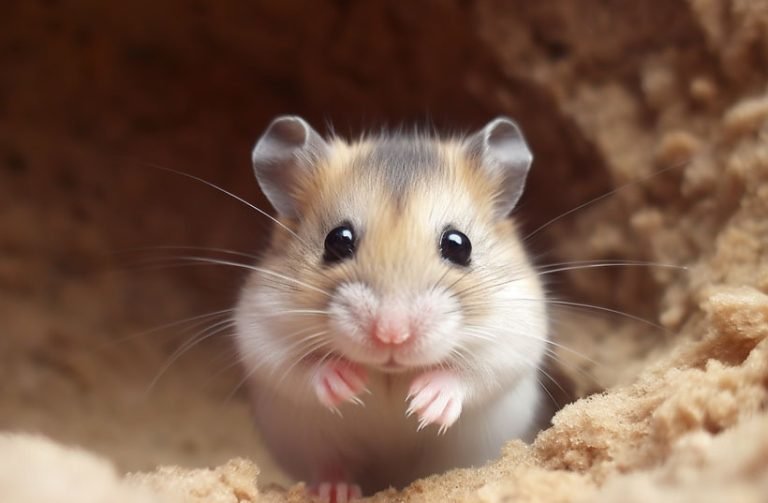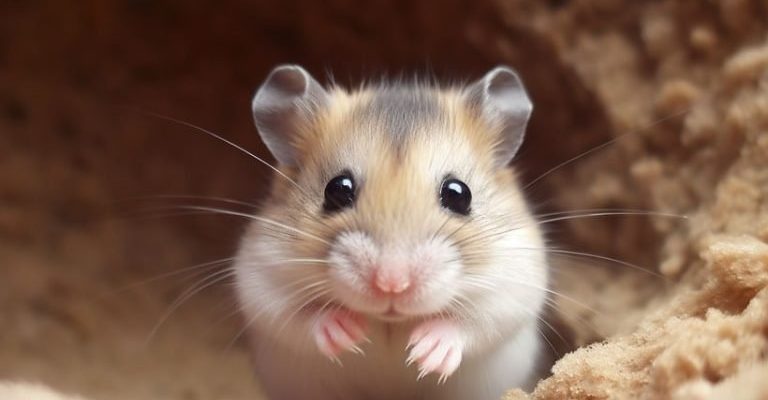
So, what do those peculiar noises mean? Why does your hamster sometimes nip at you? And when do they like to party the most? Let’s dig into the fascinating realm of hamster behavior together, diving into their noises, biting tendencies, and activity patterns. We’ll uncover the stories behind their antics and, hopefully, make you smile along the way.
Understanding Hamster Noises
Hamsters are surprisingly vocal creatures, and their sounds tell you a lot about how they’re feeling. You might hear them chirp, squeak, or even grunt, and each noise has its own meaning. For example, a happy hamster may let out soft chirps while running on their wheel, almost like they’re singing to themselves in joy.
Squeaking is another common noise. When a hamster squeaks, it could range from excitement to annoyance. If your little friend is vocal while you’re playing with them, they might just be expressing their happiness. However, if they squeak when you’re trying to pick them up, it could mean they feel threatened—so it’s best to give them some space.
Here’s something curious: If you hear your hamster making soft, clicking sounds, they could be trying to communicate with you or with other hamsters. In the wild, these sounds are often used to signal safety or to call for companionship. So, if your pet is making these noises, consider it a compliment; they might just want to let you know you’re part of their little tribe.
Common Hamster Sounds Explained
- Squeaks: Happy or annoyed, depending on the context.
- Chirps: Sounds of contentment.
- Grunts: Expressing annoyance or discomfort.
- Clicks: A sign of communication and social bonding.
Understanding these sounds can really help you tune into your pet’s mood. You’ll be able to respond appropriately and strengthen your relationship.
Why Your Hamster Bites
If you’ve been bitten by your hamster, don’t panic. It’s not personal! Hamsters bite for various reasons, and knowing why can be the key to preventing it in the future. One common reason for biting is fear. Your hamster might feel threatened if you’re too loud or sudden in your movements, making them lash out as a defense mechanism.
Another reason could be that they’re still getting used to you. Hamsters are naturally shy creatures, and it takes time for them to adjust to new humans. If you just brought one home, they might need a few days or even weeks to feel safe. Just imagine being suddenly thrust into a loud party; you’d probably want to hide, right?
You might also find that your hamster bites when it’s hungry. Sometimes, they confuse your fingers with their food! This can happen if you’re reaching into the cage without offering a treat first. A simple way to combat this is to offer your pet a healthy snack before handling them or to let them adjust to your scent by offering treats from your hand instead.
Tips to Prevent Biting
- Give them space: Allow your hamster time to acclimate to their new home.
- Use treats: Start with small, tasty treats to create a positive association with your hands.
- Handle gently: Move slowly and calmly; sudden movements can scare them.
With a little patience and understanding, your hamster can become a delightful companion, free from the occasional nip.
Hamster Activity Patterns: Night Owls in a Furry Suit
You might notice that your hamster seems to sleep all day and party all night. This is totally normal! Hamsters are nocturnal creatures, which means they’re most active during the night. Don’t be surprised if your little buddy suddenly bursts with energy around midnight, racing on their wheel or burrowing into their bedding.
But why the night shift? In the wild, being active at night helps hamsters avoid predators. They’ve adapted this behavior over time, and it’s pretty much hardwired into their systems. Imagine a nocturnal party where everyone else is asleep—that’s what your hamster thinks it’s doing!
Remember, this doesn’t mean your hamster doesn’t want interaction. It’s about timing. If you’d like to play with them, try to adjust your schedule a bit. Evening or late-night bonding sessions can be a lot of fun; just make sure you’re prepared for their burst of energy!
How to Accommodate Their Activity Patterns
- Evening playtime: Set aside some time to interact when they’re most active.
- Quiet environment: Keep their area calm during the day to help them sleep.
- Interactive toys: Provide toys or tunnels to engage their natural instincts even when you’re not around.
By catering to their natural rhythms, you’ll make both your lives a little happier.
What to Look for in Hamster Behavior
Hamsters have a range of behaviors that can give you insight into their well-being. For example, if they’re constantly reclusive, hiding away for extended periods, it could indicate stress or illness. It’s essential to observe their behavior closely.
On the flip side, a playful and curious hamster will often explore their environment and interact with you. If they’re running around energetically, climbing on things, and investigating their space, you can feel confident they’re content and healthy.
Another key behavior to note is grooming. If you see your hamster cleaning itself, that’s a good sign; they’re likely feeling comfortable and happy. But if they stop grooming or seem lethargic, it may be time to check in with a vet.
Signs of a Healthy Hamster
- Active exploration: Investigating their habitat and playing with toys.
- Regular grooming: Keeping themselves clean indicates good health.
- Curious: Approaching you or their environment with interest.
Understanding these habits not only helps you ensure their safety but also strengthens your bond, as you become more attuned to their needs.
Creating a Comfortable Home for Your Hamster
To support your hamster’s unique behaviors, it’s essential to provide a comfortable environment. Start with a spacious cage equipped with tunnels, chew toys, and a cozy nesting area. This setup will encourage natural behaviors, letting your hamster thrive and feel secure.
Bedding is also crucial. Avoid cedar or pine shavings, as these can be harmful. Instead, opt for paper-based or aspen bedding, which is safer and great for burrowing. You might even consider adding a small box with shredded paper for them to dig into—it’s like building a mini fortress!
The cage should also be in a quiet location, away from direct sunlight or loud noises. Remember, hamsters are sensitive to their surroundings. A calm space allows them to rest during the day and be more active at night.
Key Elements of a Hamster Habitat
- Space: Provide a large enough area for them to roam and play.
- Safe bedding: Choose appropriate materials for their comfort.
- Interactive toys: Incorporate items that encourage their natural instincts.
By creating a welcoming and safe home, you’ll set the stage for happy and healthy hamster behavior.
Final Thoughts on Hamster Behavior
Understanding hamster behavior, from their squeaks and nibbles to their nighttime escapades, is an adventure in itself. Once you grasp these quirks, you’ll find joy in your pet’s unique personality. Whether they’re singing to you at midnight or giving you a gentle nip, each behavior has a story behind it.
So, take the time to observe, interact, and nurture your little friend. You might just find that life with a hamster is as exciting as watching a blockbuster movie—filled with unexpected twists, heartfelt moments, and, of course, a lot of laughter. Enjoy the journey!

